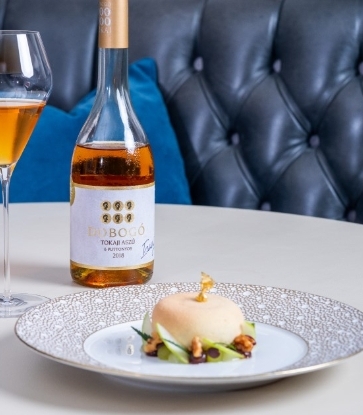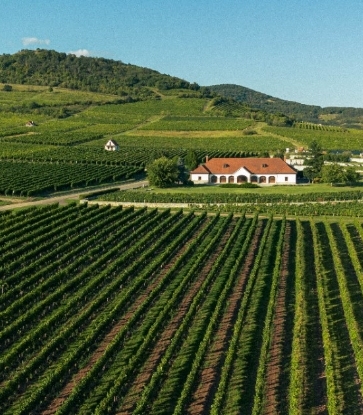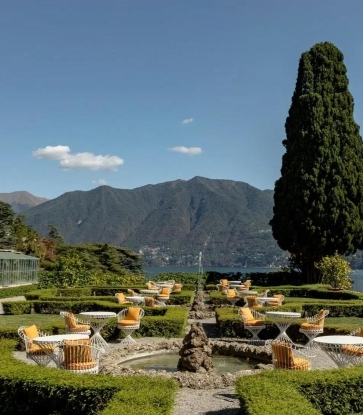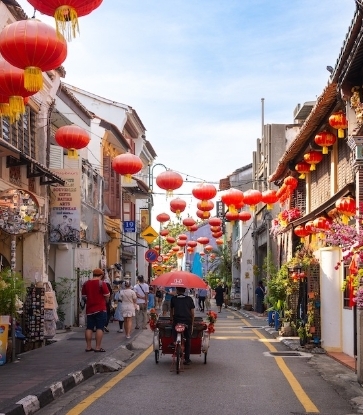Lamiat is about looking beyond the obvious. It is about paying attention to the small details and being dedicated to the pursuit of creating perfection. From process to process, from kitchen to table and from sourcing the best ingredients right down to preparing the dishes, every single element should fall together in harmony. Whether that is the preparation and arrangement of the dishes or the meticulous pairing of the right beverage, every element plays an equally important role. Chef Duangporn Songvisava (Bo) of Bo.lan Thai Restaurant (1 Michelin Star) explains how Lamiat can be found in her craft.
In a market of excess consumerism and culinary choices, what make Bo.lan stand out are the passion and the philosophies that Chef Bo and her partner, Chef Dylan Jones, follow. “We have three fundamental philosophies that we have been following since day one.”
An advocate for Thai food and sustainability, Chef Bo and Bo.lan makes it their mission to safeguard the culinary heritage of Thai food while ensuring that the biodiversity of ingredients used by the restaurant. “Whether they are wild-caught or cultivated, we always take into consideration the biodiversity of the ingredients that we use.”
The Lamiat philosophy embodied by Bo.lan started right from the beginning of the process: sourcing the raw ingredients. “We try to make sure that the produce that we use are as organic as possible—perhaps it’s not 100 percent yet, but we do try to use products from organic sustainable practices.”
Ethical practice is also a priority for Chef Bo. “I make sure that the pork and chicken that we use are raised free-range and organically fed.” Putting great care into the selection process of her raw materials, Chef Bo works closely with small-scale and artisanal producers. “For both our greens and proteins, Dylan and I would visit the farms ourselves because we don’t believe in organic certificates and brandings. It’s always better to go visit in person and see with our own eyes. The same also applies with seafood, where we would also visit the local fishermen ourselves.”

Using local Thai ingredients, the dishes at Bo.lan are created from seasonal produce. “We would talk to our local producers about the products that are available during that season so that we can go back and research on the recipes that would best suit the ingredients,” she explains. “I make use of a lot of old recipes and re-interpret them using my background knowledge to look at how the ingredients would lend itself to that particular recipe. This is because palates change, and the popular taste back then might have to be adapted to fit the people’s palate now.”
Continuing, she notes how it is also important to choose the ingredients based on the season. “Right now it’s a good season for santols, so we are serving stir-fried pork with santol and shrimp paste.” The same also applies for the other dishes. “We are also currently serving Kaeng The-Pho—a curry of morning glory with kaffir lime, dried fish and pork belly. We chose morning glory as the main ingredient because this is the rainy season, and they grow really well during this time. Using greens that are native to Thailand means that not much chemicals are needed in order for them to grow well, so I feel that the produce is trustworthy in itself.”
In fact, Chef Bo has chosen not to use any imported products at all. “Because I cook Thai food, I believe that the best ingredients are thus ones that can be locally found in Thailand, especially when it comes down to herbs and spices such as Thai basil or bird’s-eye chilli.”
Preserving the core values and identity of Thai cuisine, Chef Bo pays great attention to detail in the way each dish is prepared. “We try to make everything from scratch as much as possible—from making our own coconut cream and curry paste to fermented products such as cured pork and Thai sausages, which are made in-house. For the ingredients that cannot be made in-house, we would order them from local artisan producers.” The fact that each dish are carefully prepared and handcrafted is also Lamiat in itself. “In order to safeguard the culinary heritage of Thai food, I would follow the old ways of doing things, such as using pestles and mortars to ground the curry paste rather using the blender.”
Continuing, Chef Bo explains how balance plays a great role in the Lamiat philosophy of Thai cuisine. “The balance of flavours is what reflects Lamiat in Thai cuisine. Thai food is all about the balance of flavours. You don’t put in a big spoon of fish sauce or tamarind water all in one go. Instead, one gradually builds the taste layer by layer in order to create a myriad dimension of flavours. For instance, with the Kaeng The-Pho I mentioned earlier is very complex in its taste. You have the sourness that is derived from the kaffir lime leaves, but also from the tamarind water. To balance the two types of sourness properly is not easy, but once you’ve achieve the balance, you can taste Lamiat in the dish that was created from the care and the time taken to create those layers of flavours.”

Aside from the flavours, the balance of textures in each Thai dish is also what makes Thai cuisine unique. “When it comes to Thai food, generally, the texture is very balanced. There’s always the combination of softness versus the crunchiness in each dish. Whether it’s the contrast between the soft noodles and the crunchy raw banana blossoms and peanuts in a dish of Pad Thai or the tender roast chicken meat against the crunchy papaya in a Som Tum dish. No matter how basic the dish is, the balance has to always be there. To be able to present that is how one conveys the concept of Lamiat in the dish.”
Fragrance also plays an important role. “One strong characteristic of Thai food is fragrance, something which is beginning to disappear from Thai food today.” In fact, fragrance is the biggest telltale of how the food has been prepared.
With the market being full of processed products and ingredients, freshness has become something to treasure. “Freshly-made ingredients such as fresh curry paste and coconut cream are vastly different from industrialised or canned UHT coconut cream. The fact that one has taken time to prepare the ingredients, as well as the freshness of the raw ingredients you start with—is what makes the process Lamiat.”
And how can one distinguish the two? Fragrance. “The fragrance is completely different. With the climate being so hot in Thailand, things like chilli and garlic ferment very quickly once they are chopped up. It’s really apparent with street food where many ingredients are pre-chopped and cut using mincers. There’s no Lamiat in that.”

If Wabi-Sabi is ingrained into the Japanese cultural identity, then one could say that the essential core of Thailand and Thai cuisine is Lamiat. Interpreted by Chang as four key elements; craftsmanship, harmony, respect and refreshment, the Thai philosophy of Lamiat is brewed into each bottle of Chang, making it a perfect match to the Lamiat in each and every element of Chef Bo’s practice and Bo.lan’s culinary creations.
This content was brought to you by Chang, Official Partner of the MICHELIN Guide 2018.
www.changbeer.com
www.facebook.com/changbeer/
Here's what our inspectors said about Bo.lan
Chef couple Duangporn Songvisava (Bo) and Dylan Jones (lan) have been serving royal Thai dishes to much fanfare for nearly a decade. The heritage of the cuisine is respected, but there is a touch of modernity in the presentation. Real care and effort is put into the ingredients and flavour, along with a zero-carbon goal - choose from three degustation menus that demonstrate the chefs' passion. The attractive and intimate villa is charmingly run.




















